The widest and most distensible part of your digestive system, called stomach, does a lot more than just digesting the food. This J-shaped pouch stores food, churns it, breaks it down both mechanically and chemically, kills microbes, secretes hormones and mucus, and also absorbs nutrients.
The energy for growth, maintenance and various other activities in the body comes from food. But it is not easy for the individual cells to extract energy from the complex molecules of carbohydrates, proteins and fats. Stomach, the principal digestive organ, helps in the physical as well as chemical digestion of the food components.
The widest and most distensible part of your small intestine.
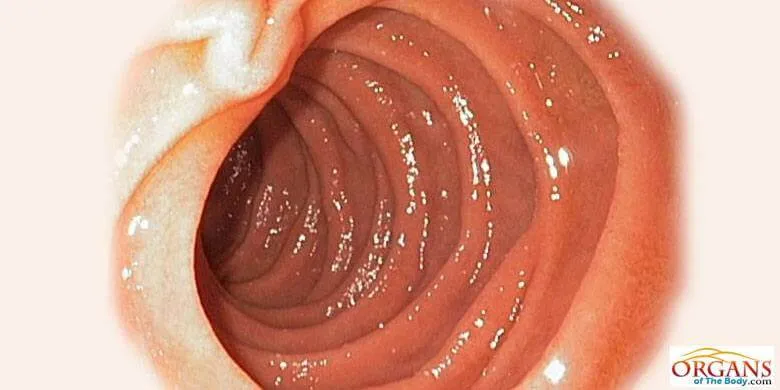
Fig. 1: Healthy stomach from the interior.
Table of Contents
After receiving food from the esophagus, the stomach churns and partly digests it. You can call it a short-term food storage facility in the abdomen. After staying here for three to five hours, the food leaves the stomach to enter duodenum, the first part of the small intestine.
As you can see in the stomach diagram, this single organ is further composed of different parts, namely, the fundus, the body, the antrum and the pylorus. However, you can make distinctions in other parts as well.
Concerning stomach location, it is placed to the left in the upper abdominal region of the body just below the diaphragm. An average individual's stomach measures about 12 inches in length. On the other hand, the width is around 6 inches. The J-shaped hollow structure can easily hold one liter of food on average. However, the overall capacity may vary from one individual to another.
According to the research conducted by DDC, an adult’s stomach can hold up to 1.5 liters of food contents. However, its amazing extendibility allows it to store an even greater amount of solids and liquids.
This muscular organ can also expand to accommodate a greater volume of food. For this, it possesses an amazing level of elasticity and can change its size according to an organism’s requirements.

Fig. 2: Different parts and layers of stomach.
When food enters from esophagus, one of the functions of the stomach is to produce and release enzymes. These enzymes help in the digestive mechanism. The pH here is two (2) that provides the optimum acidity environment for the maximum activity of pepsin, a protein-digesting enzyme.
The stomach muscles contract and relax to product wave-like motion. The coordinated motion of horizontal and longitudinal muscles helps in the physical mixing of the food well with the enzymes. The waves of muscular contraction are called peristalsis.
Food stays in the stomach for around two to five hours. After undergoing partial digestion, the chyme leaves the stomach to enter the small intestine.
Afterwards, the undigested matter enters the large intestine for further absorption of the useful substances.
Two muscular valves control the passage of food into and out of the stomach. Food enters the stomach from the esophagus through the lower esophageal or cardiac sphincter. On the other hand, the passage of food from the stomach into the intestine takes place through the pyloric sphincter.
If you like to read the interesting facts about the stomach, just go through them in last sections of this article.
Stomach Parts
Can you tell exactly how many stomach parts are there? It consists of a J-shaped, bean like muscular pouch having the distinguishable parts of the fundus, the body, the antrum and the pylorus. Meanwhile, you also come across the rugae and the four layers of the stomach wall.
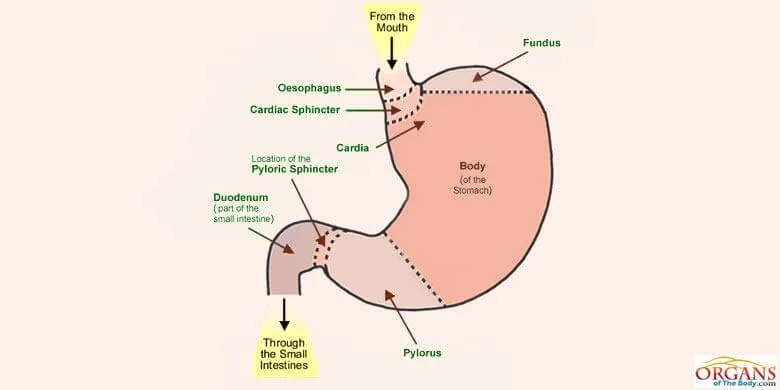
Fig. 3: Demarcation of stomach parts.
To control and regulate the passage of food, there are two sphincters, one at the beginning and the other at the end of the organ. These are the cardiac or esophageal and the pyloric sphincters.
Below is the brief description of some of the major stomach parts.
- The Fundus
- Cardiac Sphincter
- Cardia
- Stomach Main Body
- Pylorus
- Pyloric Antrum
- Pyloric Canal
- Pyloric Orifice
- Stomach Wall
- Serosa
- Tela Subserosa
- Muscularis
- Oblique Fibers of Muscle Wall
- Circular Muscle Layer
- Longitudinal Muscle Layer
- Submucosa
- Lamina Muscularis Mucosae
- Mucosa
- Lamina Propria
- Epithelium
- Gastric Glands
- Gastric Pits
- Villi or Gastric Folds
- Gastric Areas (Gastric Surface)
The word “fundus” literally means “bottom”. It is the part of a hollow organ that is at the farthest point form its opening. In case of stomach, fundus should be present at the furthest point from the pylorus orifice.
In other words, fundus is the bulging part of the stomach above the level of the esophagus opening. It begins just under the diaphragm and ends in line with the cardia. The same you can view in the stomach diagram below.
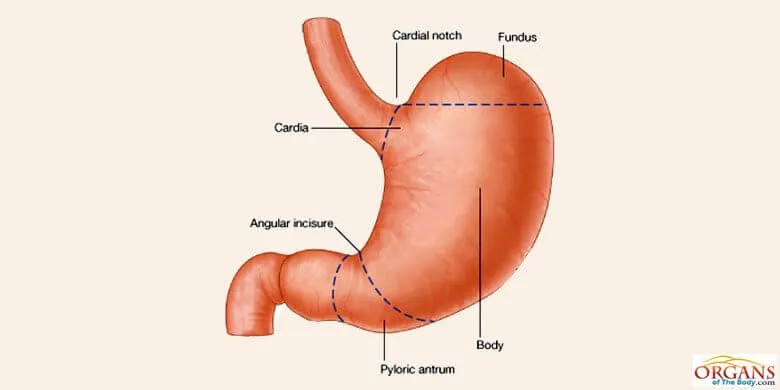
Fig. 4: Bulging part of the stomach
The cardiac sphincter is also called the lower esophageal sphincter. It is the bundle of muscles which you can find at the junction between the esophagus and stomach. It serves as a gateway to regulate the entry of the food from the esophagus to the stomach for further digestion.
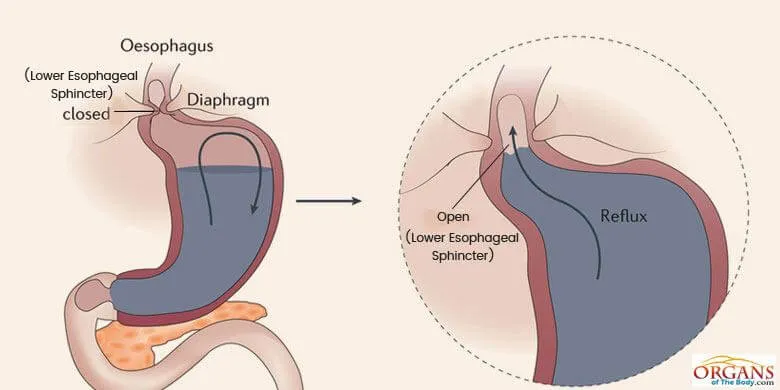
Fig. 5: Structure of cardiac sphincter.
One of the major benefits of this sphincter is that it prevents the reflux of the semi-digested food and the acid from the stomach into the esophagus.
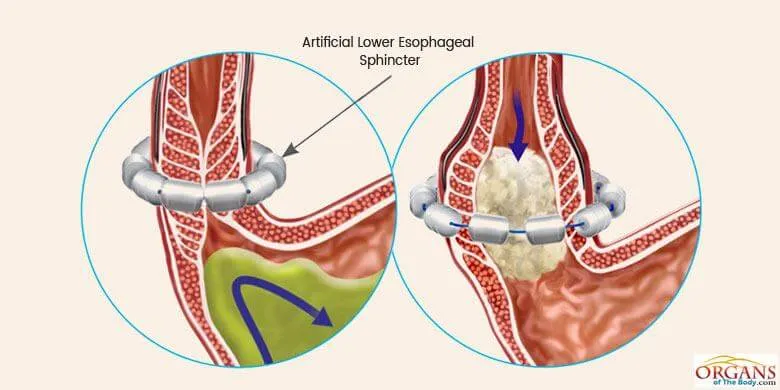
Fig. 6: Artificial Cardiac Sphincter
If some gastric disease completely damages the cardiac sphincter, the doctors can use a ring of beads in its place. The artificial lower esophageal sphincter will prevent the reflux of the acidic contents of the stomach into the esophagus.
Cardia is the region between the stomach and esophagus where the food enters the stomach bolus by bolus. In other words, it is the opening between the esophagus and the stomach. You can find it just below the gastroesophageal junction. The lower esophageal sphincter is found near to it.
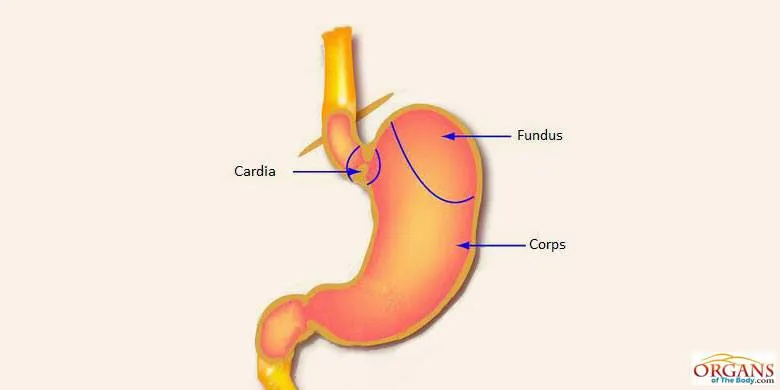
Fig. 7: Cardia
Cardia is a transition point where the stratified squamous epithelium assumes the columnar structure.
Below the level of the fundus and cardia lies the main body of the stomach (See Fig. 4). This hollow cavity stores and churns the food contents and mixes them with the gastric secretions which include stomach acid and the enzymes.
The stomach body can store up to 1.5 liters of food for digestion. Afterwards, the food moves down to the small intestine through the pyloric sphincter.
Also called pyloric part, it connects the body of the stomach to the duodenum. There are two sub-parts of the pylorus, namely, the pyloric antrum and the pyloric canal. The former opens to the body of the stomach and the later opens to the duodenum.
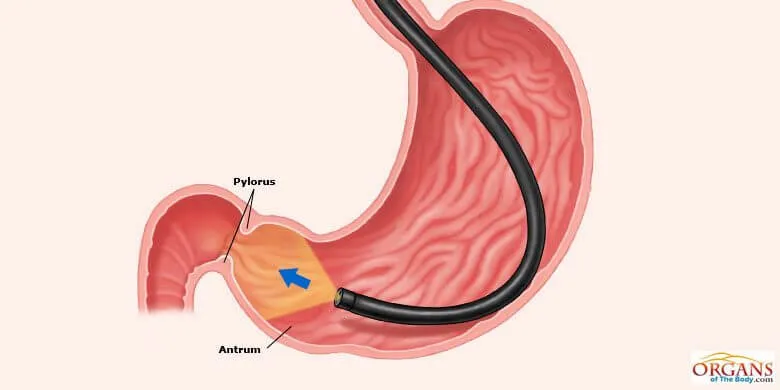
Fig. 8: Different parts of the pylorus
The narrowest portion of the stomach, pylorus measures roughly an inch in diameter with thick loops of smooth muscles surrounding it. Pylorus can be further divided into the stomach antrum, pyloric canal, and pyloric orifice.
The pyloric antrum (or antrum) is the lowermost part of the stomach which looks like a funnel. Its wide end joins the lower part of the stomach body while the narrow part makes a connection with the pyloric canal.
The pyloric canal makes a connection of the stomach with the upper division of the small intestine, duodenum. Measuring about 2 to 3 cm in length, it succeeds the stomach antrum and continues till the pyloric orifice.
Pyloric orifice is the opening or passage between the stomach and duodenum. The orifice appears at the level of the upper border of the first lumbar vertebra.
A circular duodenopyloric constriction marks the presence the pyloric orifice. On the other hand, this orifice marks the ending of the pyloric canal.
The stomach has a thick muscular wall which prevents the stomach contents from leaking into other organs of the body. At the same time, it assists in the physical breakdown of the food through the coordinated contractions and relaxations of different layers of the muscles.
Do you know your stomach can have as many as 15 different layers? Well, the National Cancer Institute enlists 15 layers of the stomach wall.
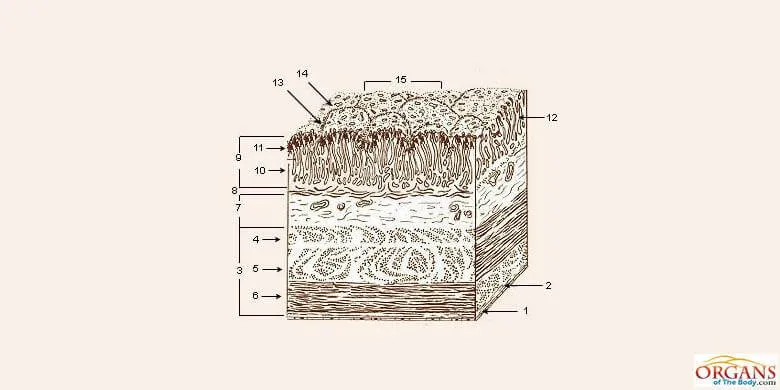
Fig. 9: 15 different layers of stomach wall.
A brief description of each of the stomach wall layers is given below:
Serosa is the outermost layer of the stomach which surrounds the muscularis. It has got a smooth and slippery surface. Meanwhile, it secretes a watery fluid, the serous fluid, to keep itself wet.
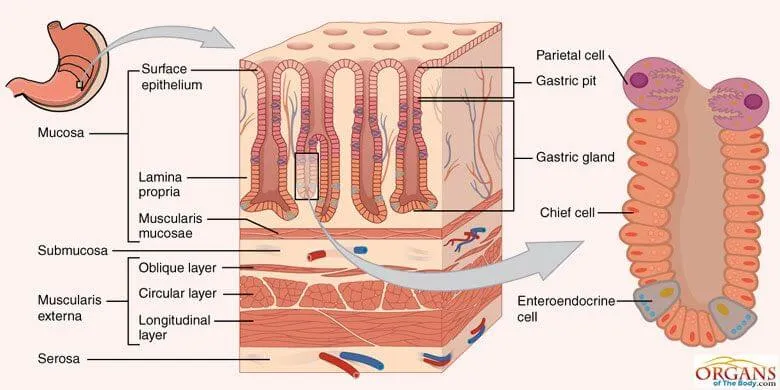
Fig. 10: Outermost layer of stomach.
When the stomach is performing its job of churning the food, the smooth and wet surface of serosa serves to protect the organ against friction.
As the very name suggests, the subserosa is a layer of connective tissue beneath the serosa.
Muscularis is a unique layer of the stomach wall. It lies adjacent to the submucosa. This layer is responsible for producing the wave-like movements, called peristalsis.
The oblique fibers of muscle wall form one of the three layers of muscles in the stomach wall. The other two layers are those of inner circular rings and the outer longitudinal muscles.
The circular muscular layer lies outer to the oblique muscle fibers and inner to the longitudinal muscles layer in the muscularis region.
As you can see in the stomach pictures, the longitudinal muscle layer consists of longitudinal muscle fibers lying outer to the circular muscle layer.
The longitudinal, oblique and circular layers of smooth muscle fibers move in coordination with one another to produce wave-like movements in the process of peristalsis.
The layer surrounding the mucosa of stomach is the submucosa or tela submucosa. It contains different connective tissues, nerves and the blood vessels. These connective tissues provide support for the mucosa and connect it to the muscularis externa.
This thin layer of muscles is simply known as muscularis mucosae. It is present outside the lamina propria mucosae and separates it from the submucosa layer. Several thin layers of smooth muscle fibers keep on creating gentle agitations.
Also called gastric mucosa, it is a 1 mm thick layer with a smooth and velvety surface. This layer contains gastric glands with the entrances to these glands, called gastric pits.
Present beneath the mucosal lining epithelium, it is a layer of loose connective tissue. In this layer, you will find mucosal glands, lymph vessels and blood vessels. Meanwhile, eosinophils, macrophages and the mucosa-associated lymphoid tissue are also present.
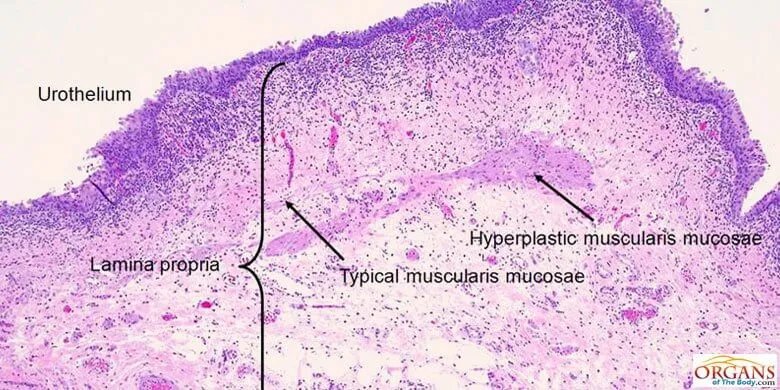
Fig. 11: Layer of loose connective tissues.
The blood capillaries in the lamina propria have pores in them to allow for the absorption of the products of digestion into the blood circulation.
Epithelium lines the lumen or the interior of the stomach. It is one of the three layers of mucosa, with the other two being lamina propria and the muscularis mucosae. The epithelial layers invaginates into the underlying connective tissue to form glands.
The Gastric glands are found in the mucosa layer of the stomach. Their name is based on the fact that they secrete the gastric juice and the protective mucous membrane. In appearance, they look like the branched tubules.
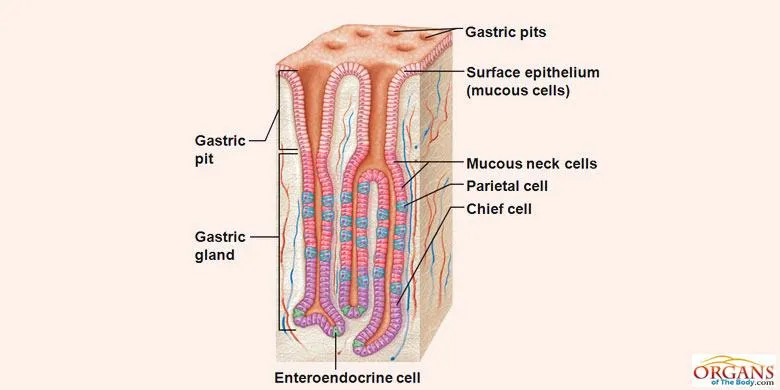
Fig. 12: Structure of gastric glands.
Based on their location and the type of secretion they produce, the gastric glands are of three types. These are: cardia gastric glands, intermediate or true gastric glands, and the pyloric glands.
The cardiac gastric glands are found at the very beginning of the stomach. The intermediate or true gastric glands are present in the central stomach areas. On the other hand, the location of the pyloric glands is in the terminal portion of the stomach.
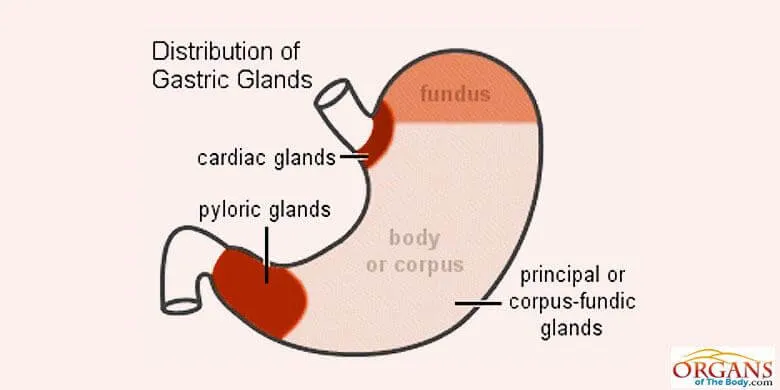
Fig. 13: Distribution of gastric glands
The job of both the pyloric and cardiac gastric glands is to secrete mucous for mucous membrane coating. This coating is to protect the stomach wall from self-digesting.
On the other hand, most of the digestive substances are secreted by the intermediate or true gastric glands. Further, the true gastric glands contain three types of cells.
The first type is that of zymogenic or chief cells which produce the enzymes, like pepsin and rennin. The second type is that of parietal or oxyntic cells which are responsible for the secretion of hydrochloric acid.
The mucous neck cells form the third type of the true gastric lands cells. They are involved in the secretion of mucous.
The gastric pits are actually the small pores in the gastric glands. These pits serve as the passage of the gastric secretions into the stomach. Do you know there can be as many as 65,000 gastric pits per square inch?
A villus, ruga or gastric fold is the folding of the mucous membrane on the internal surface of the stomach.
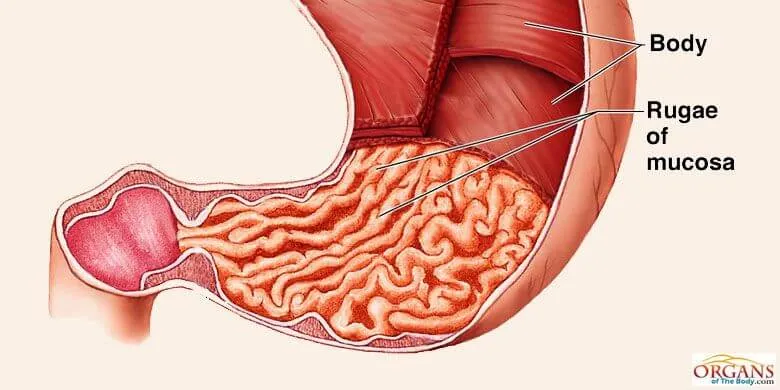
Fig. 14: Structure of gastric folds.
The purpose of this folding is to increase the surface area of the interior of the organ to facilitate absorption of food products.
Gastric areas refer to the surface of the gastric mucosa. The gastric surface is lined by an epithelial layer. It is a columnar epithelium. The surface is smooth, soft and velvety.
Stomach Function in Digestive System
Stomach carries out the physical and chemical digestion of food. When the muscles contract and relax periodically, it results in the physical digestion of the food. The other stomach function is the chemical breakdown of meal. The enzymes secreted by glands in the walls of stomach help in the chemical breakdown of dietary substances.
However, the stomach is unable to digest all the classes of foods. At this place, it is the protein component of our diet which breaks down into smaller constituent parts. The enzyme coming from the surrounding glands is ‘pepsin’. It is the specific biological catalyst for protein breakdown.
The pepsin enzyme requires an acidic medium for its optimum activity. Therefore, as a stomach function, stomach acid or HCL is produced in order to maintain a highly acidic environment.
The release of HCL also serves another important function in the stomach: killing pathogens. Thus, doing away with harmful bacteria is an additional function of the stomach which helps you avoid different kinds of diseases.
Here follows a list of the primary and secondary stomach functions:
- Storage of Undigested Food
- Mechanical Breakdown of Meal
- Chemical Digestion
- Killing of Harmful Microbes
- Production of Intrinsic Factor
- Absorption of Nutrients
- Hormonal Secretions
- Secretion of Sticky Mucous
If the food you eat continuously travels through the gastrointestinal tract and is excreted out of the body without making a stop anywhere, will it be of any use to your body? Of course not. But why?
When food, passing through the alimentary canal, makes a stop at different locations, the products of digestion are absorbed into the circulatory system. Afterwards, the nutrients reach every individual cell and serve as a potential source of energy.
The job of the stomach is not only to digest the food but it also serves as the storage for food. How long does food stay in the stomach? It depends on multiple factors how long the food will stay the stomach. These factors include the composition of the meal, physiological stress, gender, reproductive status, and so on.
Moreover, all the contents of stomach are not emptied in the single phase. The stomach empties its 50% contents in 2.5 to 3 hours. The complete emptying of the stomach may take up to 5 hours.
Your stomach is not only responsible for the chemical breakdown of the food, it also carries out mechanical digestion. In the process of mechanical digestion, the stomach churns the food items and mixes them with different gastric secretions, such as acids and enzymes.
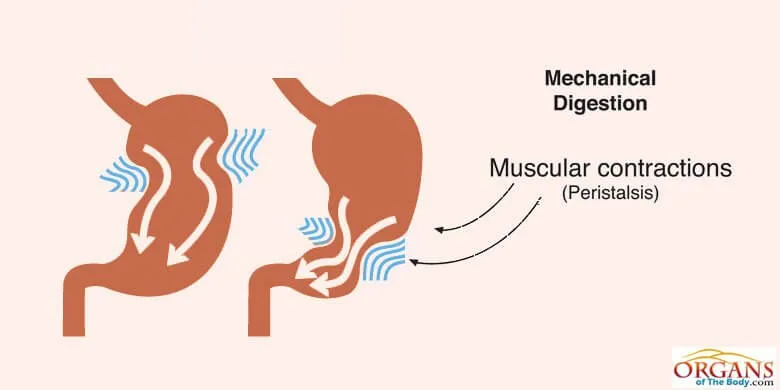
Fig. 15: Mechanical digestion of food in stomach.
How does the churning of the food contents take place? Well, it is through the coordinated movements of the longitudinal, circular and oblique muscle fibers that the masticated food is mixed with the gastric secretions. These muscle fibers are present in the stomach wall.
As the very name suggests, the chemical digestion occurs through the application of the chemicals to the food present in the lumen of the stomach.
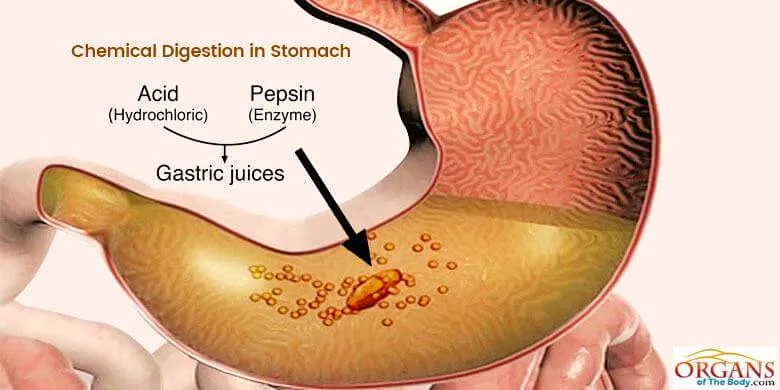
Fig. 16: Chemical Digestion of Proteins in Stomach .
The digestive enzymes and water carry out the breakdown of the fats, carbohydrates and proteins in the smaller molecules. These molecules can then easily be absorbed into the blood circulation and reach every individual cell for the extraction of energy.
The chief cells in the stomach secrete pepsin – the protein digesting enzyme – in its inactive form, pepsinogen. The action of stomach acid converts pepsinogen into its active form, pepsin.
Another important gastric enzyme that helps in the chemical breakdown of the food is gastric lipase. It helps in the breakdown of fats.
The chief cells in the stomach also secrete an enzyme, called chymosin or rennin, for the coagulation of milk.
Killing of microbes is also an important stomach function. Anyhow, how does your stomach kill the harmful microorganisms?
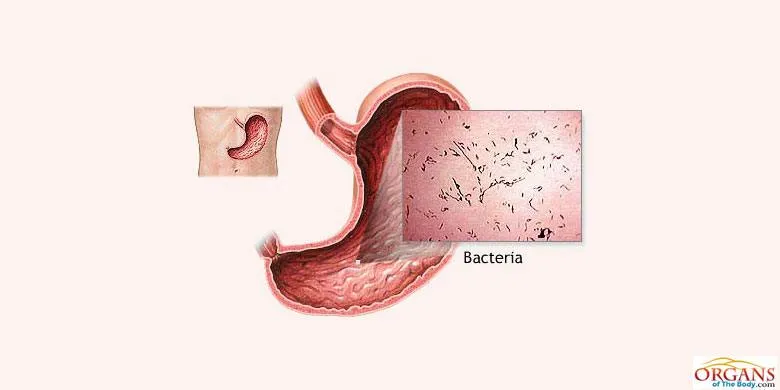
Fig. 17: Bacteria and viruses in stomach.
Well, your stomach uses the powerful hydrochloric acid to kill the germs that you ingest with the food accidently.
Do you know your stomach secretes the gastric intrinsic factor or GIF into the lumen which assists in the absorption of vitamin B12? The GIF is a glycoprotein in nature. These are the parietal cells in the wall of the stomach which produce this glycoprotein.
The primary job of the GIF is to facilitate the absorption of vitamin B12. This absorption, however, takes place in the small intestine. Here you also need to note that there is a GIF gene in the chromosomes which has coding for this protein.
Though most of the absorption of carbohydrates, proteins, fats, water, vitamins and minerals takes place in the small intestine, your stomach does play a minor role in this regard.
Which of the nutrients does the stomach absorb? Well, these are mainly the lipid-soluble compounds, such as aspirin and ethanol that the stomach takes up.
Your stomach also has something to do with the secretion of hormones. The hormones secreted by the stomach are called gastric hormones.
Gastrin is the principal hormone that the gastric epithelium of the stomach secretes. On the other hand, the job of gastrin is to stimulate the secretion of gastric acid into the stomach lumen. At the same time, it also plays a role in the proliferation of gastric epithelium.
It is also the job of stomach to secrete sticky mucous. This mucous creates a mucous layer along the internal lining of the lumen. The purpose of this mucous membrane is to protect the stomach against self-digestion.
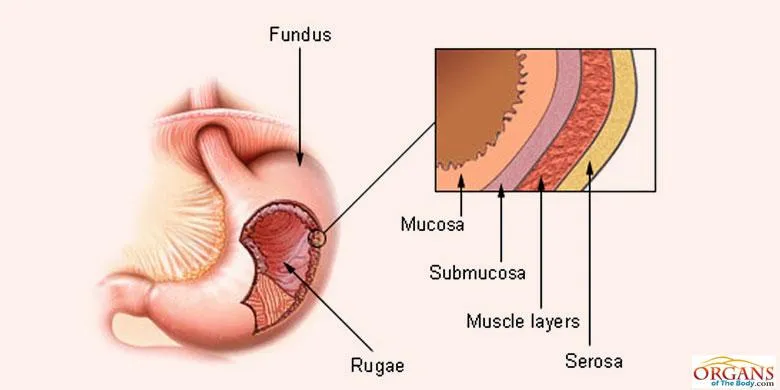
Fig. 18: Layers of stomach
Did you ever think a strongly acidic medium in the stomach could hurt the walls of your stomach as well? It is the mucous membrane that prevents it from doing so!
Stomach Diseases
Stomach diseases may have a mild or serious effect on the normal working of the stomach – one of the top ten very important organs of your body. Some fatal disorders even require the removal of this organ.
Can you live without a stomach? Living without a stomach is possible. But you will have to face challenges and make compromises. So, it is wise to take due care of this principal organ of the digestive system while it is healthy.
Different stomach conditions may lead to pain, discomfort, digestion problems and even death. Suffering from a stomach disease, you may experience heartburn, blood in stool, vomiting and unintended weight loss.
Just go through the brief description of some of the major and frequently occurring stomach diseases, so you can learn how to avoid them.
- Peptic Ulcer (Gastric Ulcer)
- Gastric Ulcer Symptoms
- Feeling of heartburn.
- Indigestion.
- Nausea, leading to vomiting.
- Unintended loss of bodyweight.
- Bloody or black stool.
- Vomiting of blood.
- Severe abdominal pain, etc.
- Treatment
- Dyspepsia
- Dyspepsia Symptoms
- Discomfort or pain in the belly.
- Bloating and gassiness.
- Unpleasant feeling of fullness after eating.
- Nauseated feeling with or without vomiting.
- Heartburn and loss of appetite.
- Pain in the abdomen above the navel region.
- Treatment
- Stomach Flu
- Stomach Flu Symptoms
- Loose motions or watery diarrhea without blood.
- Severe abdominal pain.
- Nausea, which may lead to vomiting.
- Pain in muscles and/or head.
- Low-grade fever.
- Presence of blood in vomit.
- Excessive thirst, dry mouth and deep yellow urine.
- Treatment
- Stomach Cancer
- Stomach Cancer Symptoms
- Feeling of pain and discomfort in the stomach which you cannot relieve with soothing foods or antacids.
- Loss of appetite, followed by weightloss.
- Nausea and vomiting.
- Gassiness, heartburn and belching.
- Feeling of fullness or bloating.
- Fatigue and weakness.
- Black stools due to gastrointestinal bleeding.
- Treatment
- Gastritis
- Gastritis Symptoms
- Recurrent upset stomach accompanied by nausea.
- Bloated feeling.
- Pain in the upper abdominal region.
- Indigestion, nausea and vomiting.
- Burning sensation in the stomach after the meals or at night.
- Vomiting blood and black stools.
- Treatment
Peptic ulcer refers to the formation of painful sores in the lining of the stomach or duodenum – first part of the small intestine. Sometime, it may also affect the esophagus. When the formation of sores occurs in stomach, the condition is called stomach ulcer or gastric ulcer.

Fig. 19: Gastric Ulcer
About 80% of all the cases of peptic ulcer occur due to the infection of the bacterium Helicobacter pylori.
Sometimes there are no symptoms associated with this disease. However, as the disease advances, there may appear various symptoms.
A dull pain right after taking a meal which may radiate to the back and behind the breastbone.
In mild case, your health care provider may prescribe drugs that reduce the secretion of stomach acid. The antacids are also helpful. In case of the severity of the condition, doctors suggest the use of antibiotics directed against H. pylori bacterium.
In case of bleeding and perforation of the stomach, the patients may need to undergo surgery. On the other hand, as an effective home remedy, you should take a well-balanced diet that is also rich in fiber. Though milk increases the stomach acid production, taking one or two glasses a day is usually not harmful.
Meanwhile, you should avoid tea, coffee, caffeinated sodas and excessive alcohol consumption.
Dyspepsia is one of the commonly occurring stomach conditions. Indigestion is a common term for this digestive disorder. Most of the people in the world experience some symptoms of dyspepsia at some stage in their lives.
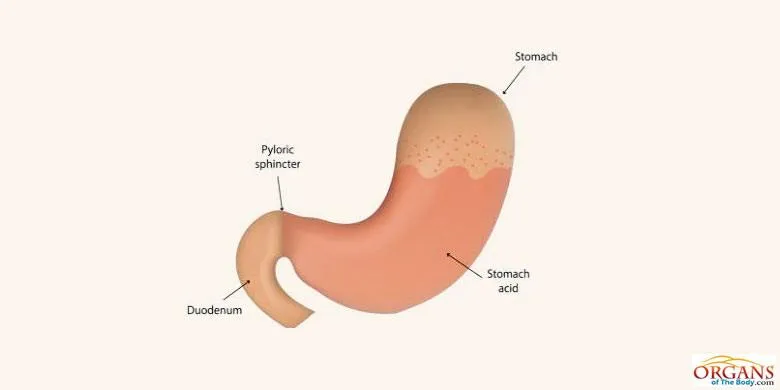
Fig. 20: Dyspepsia (Indigestion)
The causative factors for the disease include hiatal hernia, gastroesophageal reflux disease (GERD), peptic ulcer, depression and stomach cancer.
By making changes in the lifestyle, particularly the eating habits, you can easily relieve the dyspepsia symptoms. For example, you may take several small meals instead of 2 or 3 large ones. You should avoid late-night snacks and wait for at least 2 to 3 hours before lying down after the meal.
While suffering from indigestion, you need to avoid alcohol, mint, chocolate, smoking and chewing tobacco. If the symptoms persist, your healthcare provider will try to diagnose the underlying cause of the disease before suggesting an appropriate treatment. In case no underlying factor is obvious, some medicines are used to relieve the symptoms.
The stomach flu is different from the real flu or influenza. Influenza affects different parts of respiratory system. On the other hand, stomach flu is an infection of the stomach and the intestine. Another medical term for this condition is gastroenteritis.
It usually occurs due to a viral infection. Sometimes, bacteria can also cause this disease.
As stomach flu involves diarrhea and vomiting, it may lead to dehydration. Andrew Nowalk, MD, Ph. D. an assistant professor of pediatrics at Pittsburg Children Hospital stresses the need to keep the patient hydrated.
However, the patients need to avoid the caffeinated drinks, such as coffee, chocolate and strong black tea. At the same time, the consumption of alcohol is not a good idea. On the other hand, the use of bananas, rice and applesauce may prove to be beneficial.
To relieve the painful symptoms, your health care provider may recommend some medications.
Gastric or stomach cancer refers to the growth of malignant cells in the lining of the stomach. Mostly, the cancer of stomach is associated with adenocarcinoma. In this case, the growth of cancerous cells occurs in the cells of the stomach wall.

Fig. 21: Stomach Cancer
Unfortunately, the symptoms appear only after the malignancy has progressed to a dangerous extent. At this stage, it becomes difficult to remove it completely through surgical means.
The food preservatives, such as nitrates and nitrites, are likely to increase the risk stomach cancer. Meanwhile, the pickled, smoked and salty foods serve as an even greater risk factor for the disease. The bacterium Helicobacter pylori is also said to play its role in the development of gastric cancer.
The small and surgically curable gastric cancers usually do not involve any serious symptoms. However, following symptoms may appear in the more severe cases.
You can prevent the disorder by limiting smoked, salty and pickled foods and increasing the consumption of fresh fruits and vegetables. If, unfortunately, you fall victim to this condition, the doctors may suggest surgery as the primary treatment measure. In this process, they may also remove part or all of the stomach.
Another practicable option is that of radiation therapy to relieve the pain and bleeding in the stomach and intestine. Doctors apply this therapy instead of or in addition to the surgery. However, the timely diagnosis is very important for preventing complications and getting a successful treatment.
As the name suggests, gastritis is an inflammation of the wall of stomach. The condition may be acute (occurring suddenly) or chronic (gradual development).
Do you know the risk factors for gastritis? Infection of Helicobacter pylori, stress, chronic vomiting, excessive consumption of alcohol and certain medications can serve as major causes for the onset of this disorder. Meanwhile, the reflux of bile from the bile tract into the stomach is also one of the causes of the gastritis.
If you do not get timely treatment, the disease may lead to severe loss of blood and also increase the risk of stomach cancer.
The use of antacids and other such drugs that reduce the stomach acid is helpful in relieving the symptoms of gastritis. Meanwhile, you need to avoid the use hot and spicy foods, and limit the consumption of alcohol.
If H. pylori bacterium is the causative agent, your healthcare provider may prescribe different antibiotics. Here it is important to note that you should not start or stop any medication without consulting a specialist.
Amazing Stomach Facts
Here are some interesting pieces of information about your belly. Just read and, besides enjoying yourself, add to the pool of your knowledge.
- The production of mucus inside stomach is to prevent the enzymes from digesting the walls of the organ itself. If, unfortunately, the enzymes start digesting the walls, you call the condition as ulcer of stomach.
- Contrary to the general belief, the stomach function is not to digest food completely. The organ digests only the protein component of the food. In fact, it is the small intestine where there is the digestion and assimilation of most of the food constituents.
- The pH of the stomach is about 2, which is strongly acidic!
- People can survive without a stomach if some disease requires its removal. However, they will have to face challenges and make compromises.
- Do you really know your stomach can expand to hold as much as 4 liters of food at a time?
- You can prevent the Stomach diseases that disturb its function by taking a balanced diet and ensuring better hygienic conditions. Regular exercise can also keep the whole of your body in a healthy state.
- The average length of small intestine in human males and females is 6.9 and 7.1 meters, respectively.
- The bile juice, produced by liver and stored in gallbladder, assists in the digestion of fats in the diet.
Interesting Stomach Facts for Kids
Kids like interesting facts about anything more than the adults do. It serves as a fun-yielding way to learn about new things. Below are some of the truly enjoyable stomach facts for kids:
- You can have an idea about the amazing strength of the stomach acid from the fact that if you pour it on the palm, it may create a hole in the hand!
- In case of discomfort in stomach, you usually point to the region of body that is not stomach but abdomen! Where is its exact location then? This digestive organ is present in the left upper part of your belly.
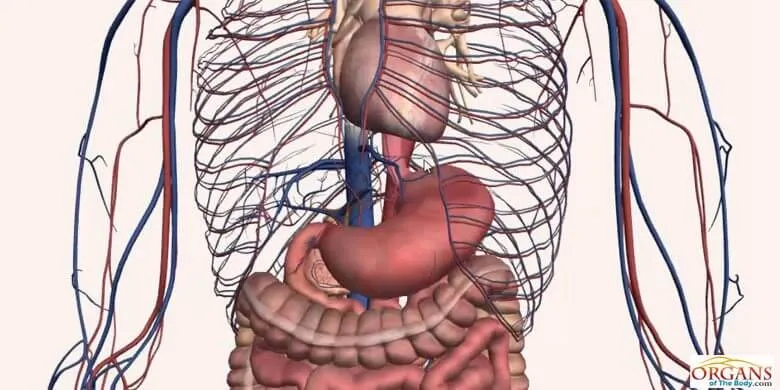
Fig. 22: Stomach Location in the Body
- Do you know which organ of the body serves as a first line of defense for immune system? It is the elastic pouch of stomach. The concentrated hydrochloric acid present in it kills germs, including bacteria and viruses.
- It is one of the stomach facts that when your face turns red, the lining of stomach also assumes reddish appearance!
- Belching or burping is the easiest way to get rid of the air in the stomach. It goes there through food or carbonated drinks.
- It is the thick layer of mucus that prevents the protein digesting enzyme, pepsin, from digesting the wall of stomach.
- After every two weeks, a fresh layer of mucus is secreted on the inner lining of the stomach.
- The stomach is absent in the bodies of the animals like hydras and roundworms. So, they cannot move around as easily as the animals with stomach do.
- The presence of stomach enables the organisms have smarter bodies and larger brains!
- Contrary to the popular myth, the size of stomach in smarter people is not smaller. It is of the same size in all individuals!
- Do you know eating carbohydrates makes you get hunger pangs very quickly? On the other hand, fats do not make you feel hungry for a comparatively longer duration.
- The animals, like deer, cows and giraffe usually have stomachs with multiple chambers. However, you cannot call these compartments as separate stomachs.
- In April, 2017, during CT scan examination, Saudi doctors observed as strange object in the stomach of a 21 year old. The object turned out to be a lightbulb which had remained in his stomach for 11 years!
- A team of doctors at King George’s Medical University removed a more than six-inch long wooden stick from the stomach of a ten-year-old in April 2017. It went to the boy’s stomach as he fell off a tree and onto the stick.
- In a bizarre ritual, a man placed his baby inside the stomach of a dead animal with the intention to make him a good hunter.
References:
- Musk Health Medical University of South Carolina, Stomach and Duodenum.
- BBC CO. Science: Human Body and Mind
- Wikipedia The Free Encyclopedia, Stomach
- Encyclopedia Britannica, Human Digestive System
- Medical Dictionary, Pyloric Canal Pyloric Orifice
- VIVO Pathophysiology, Colorado State University, Gastrointestinal Transit, Chymosin and the Coagulation of Milk, Absorption in the Stomach, Overview of Gastrointestinal Hormones
- Siddiqi, L. H. (2011) Medical Histology, 5th Edition, Paramount Publishing Enterprise, http://www.paramountbooks.com.pk/index.asp
- The Johns Hopkins Complete Guide to Symptoms and Remedies (2004), published by Black Dog & Leventhal Publishers, Inc.


